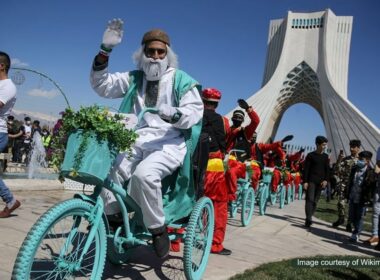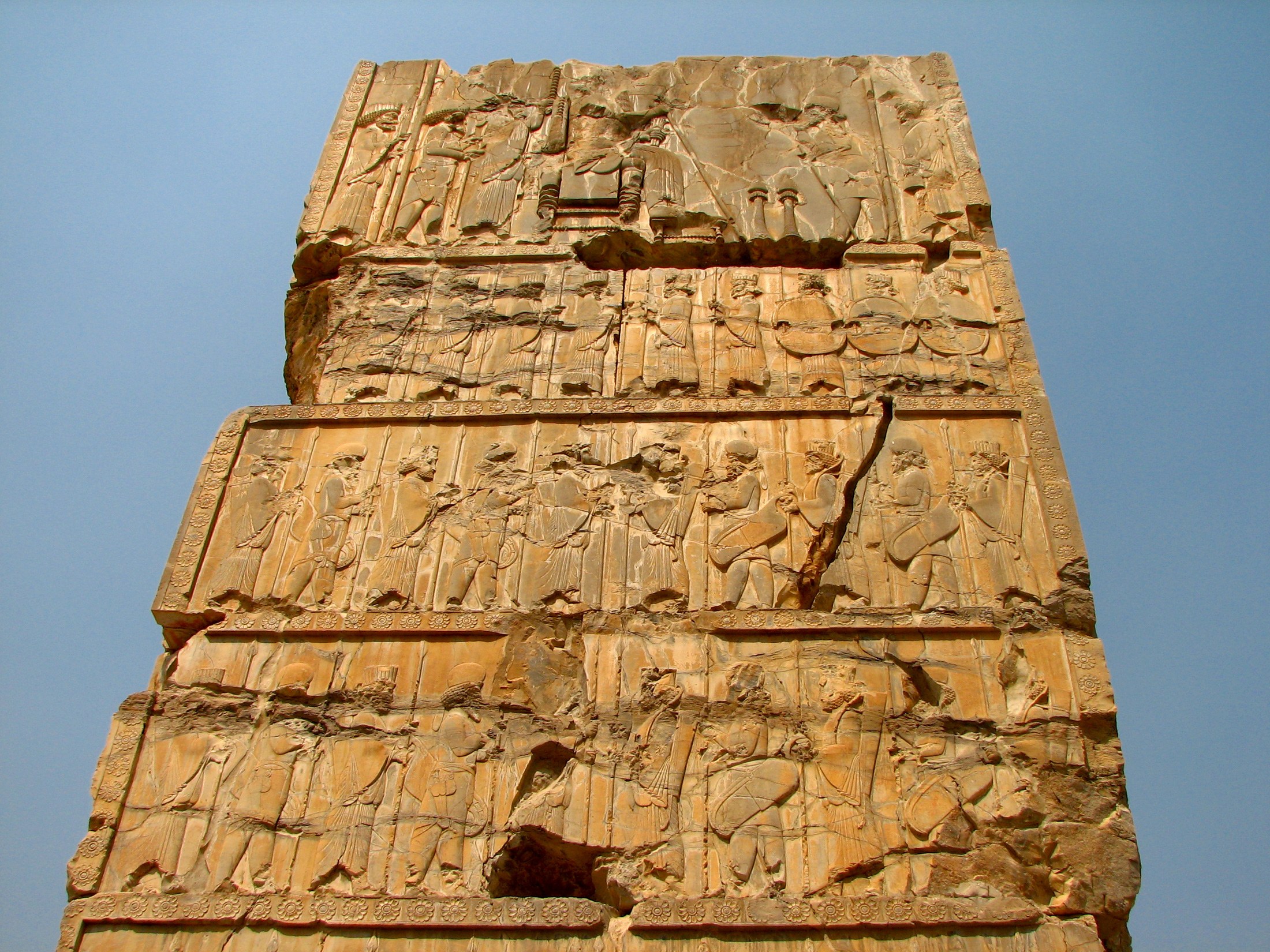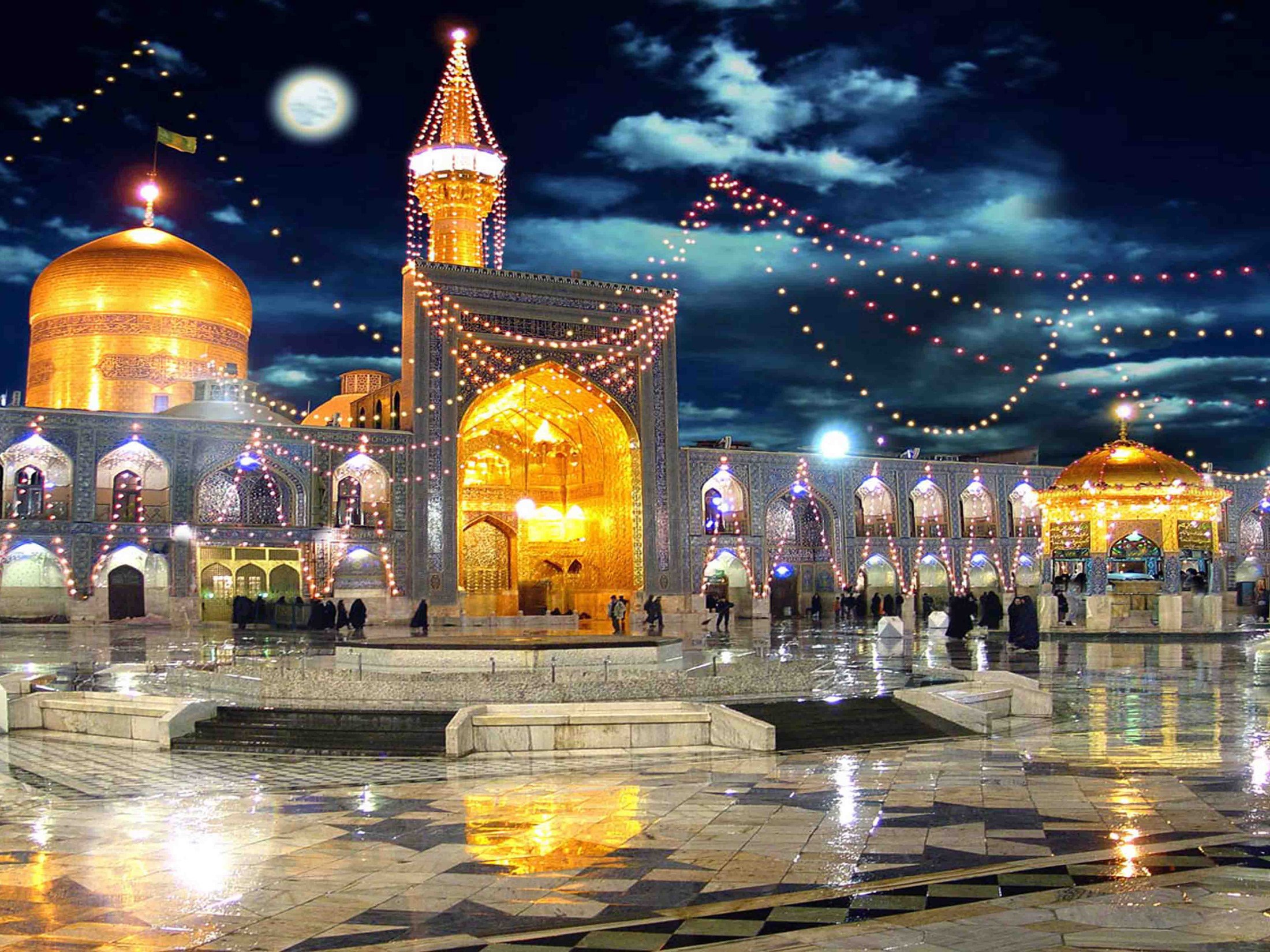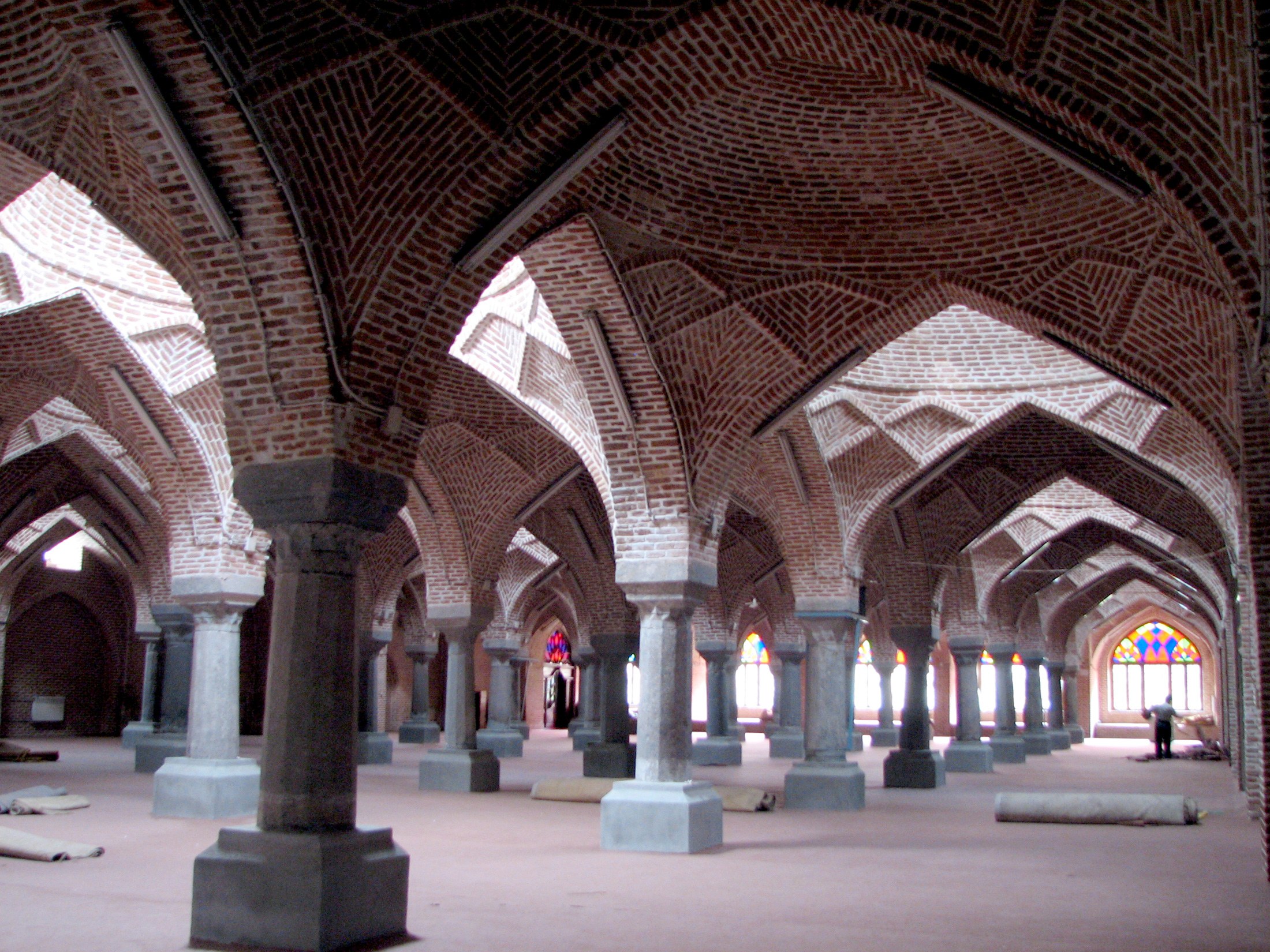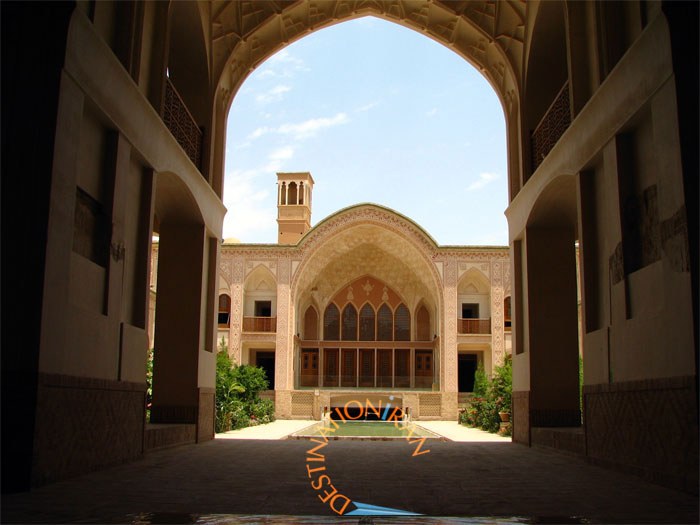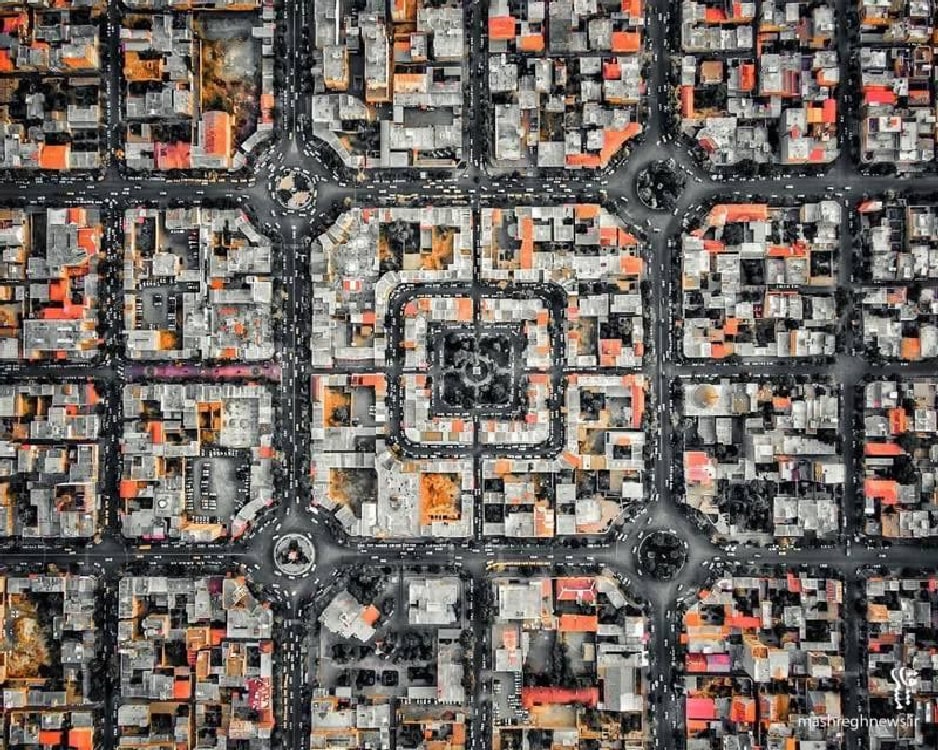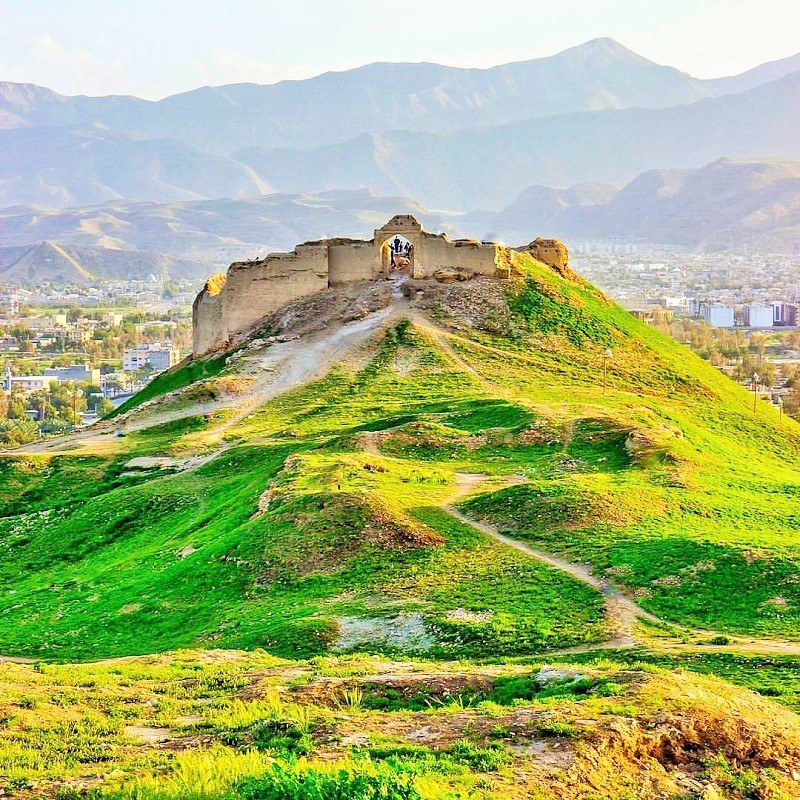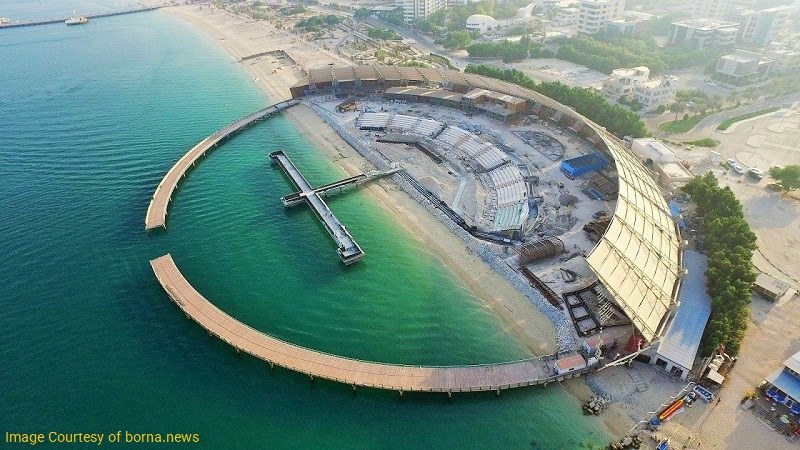Geography of Shiraz
The city is the capital of Fars province, located at the southwest of Iran at an altitude of 1543 m above sea level. Shiraz is surrounded by mountains on all sides and has got a moderate climate. A seasonal river called Khoshk (dry) crossing the city helps it against probable flood caused by the sudden rain outpouring largely in a short period of time.
The average annual temperature in the city is 18°C. The average annual rainfall is 337 mm. Shiraz is 930 km away from Tehran. Here are the possible ways of traveling to Shiraz:
- By car
Traveling from Tehran to Shiraz by car takes 12 to 14 hours. The route passes through Qom, Kashan, Isfahan, Shahreza and Abadeh cities. It is possible to travel to Shiraz by passenger car or bus.
South, East, Beyhaqi and West terminals of Tehran have passenger buses leaving daily to Shiraz. The best season for traveling to Shiraz is spring and autumn.
- By airplane
The flight time from Tehran to Shiraz is an hour and 15 minutes. The flight departs from Mehrabad Airport where there are daily more 10 flights to Shiraz.
In addition, there are flights from Shiraz to Tehran, Mashhad, Ahvaz, Abadan, Yazd, Bandar Abbas, Bandar Lengeh, Qeshm, Isfahan, Kerman, Kish, Noshahr, Assaluyeh, Rasht, Sari, and Zahedan. Shiraz has also an international airport. There are flights to Dubai, Doha, Kuwait, Istanbul, Sharjah, and Muscat.
- By train
There are trains leaving from Tehran and Mashhad to Shiraz. Shiraz Railway Station is just outside of the city and about 30 minutes from the city center.
Population & Economy of Shiraz
With a population of approximately 1,840,000 in 2011, it is ranked sixth among Iranian large cities. It has industries producing cement, fertilizers, sugar, wood, textile, rugs, etc. It has got a major oil refinery, a petrochemical plant and is a major center for electronic industries.
Also, Shiraz has always produced a lot of agricultural products like corn, wheat, barley, rice, etc.
History of Shiraz
As you’d like to learn more about the history of the city before you visit Shiraz tourist attractions, here is a brief review of what has been happening in this city:
In Elamites’ cuneiform inscriptions, the name of Shiraz has been mentioned around 2000 BC. There are more indications of ancient settlements in and around Shiraz according to the unearthed findings from the historical mounds at this part of Iran. Some of them even go back to 7000 years ago.
In the Achaemenian era, the people traveling from Susa to Persepolis and Pasargadae had to go through Shiraz. The last Parthian king had control over this city and in the Sassanian era, Shiraz was between Bishapur and Gur (today’s Firooz Abad), the two Sassanian capital cities.
Istakhr, the most famous city in Fars province found its higher prominence long time before Shiraz. It stood against Arab invaders in the 7th century. When Estakhr was conquered and devastated by Arabs, Shiraz reputation began to grow and continued under several rulers and historical eras. Several local dynasties ruled there such as Buyids, Seljuks, and Khwarazmian before the Mongols’ invasion.
During Ilkhanids and Timurids, when Chengiz Khan and Timur attacked Iran, Shiraz managed to escape destruction. In the 14th century, as a result of scholars and artists’ encouragement, Shiraz turned into a center for the artists and men of pen. Some of the most famous Iranian poets are from Shiraz such as Hafez and Sa’dy. Their tombs are today major tourist attractions of Shiraz.
After this period Shiraz had a lot of ups and downs. During rises, the population grew as it was a safe place to live. On the contrary, when attacked the inhabitants left the city. A prosperous time for Shiraz after several disturbances was the time when Karmkhan-e-Zand came to power and declared Shiraz his capital.
He built a royal district with a fortress and a mosque together with one of the finest bazaars of Iran that is still charming. In the 19th century, Agha Mohammad Khan established Qajar dynasty in Tehran and destroyed part of the city to take revenge from the Zand rulers. Therefore, Shiraz lost its power and turned into a provincial capital city. Despite all this, the city maintained its prosperity anyway it could.
Historic Attractions inside the City
Here’s a list of Shiraz Tourist Attractions inside this city:
Tomb of Hafez (Hafeziyrh)
This is the burial place of Hafez, the well-known Iranian poet of the 14th century whose ghazal poems are still considered the best in their genre.
Tomb of Sa’ady (Sa’adiyeh)
This is the burial place of Sa’dy, the most prominent poet of Iran second only after Ferdosy in using the Persian Language. His direct words and beautiful literary works in prose and poetry has attracted a lot of Persian speaking people inside and outside Iran.
Vakil Bazaar
Built by the order of Karimkhan-e Zand as part of the entire royal district, Bazaar-e Vakil is still a very attractive bazaar especially at its Saray-e Moshir courtyard and set of handicraft shops around it.
Vakil Mosque
It has been built in the mid 18th century by the order of Karimkhan-e Zand. The mosque has got two large eyvans with beautiful tile works.
Vakil Bathhouse
This public bathhouse has been built as part of the same royal district constructed by the order of Karimkhan-e Zand. It is now a museum of Fars Province rugs and woven items.
Nasir-ol-Molk Mosque
It is a local mosque with unique decoration particularly at its columned prayer hall where stain glass windows let the light through in the morning.
Atiq Jame Mosque
This is one of the very old mosques still standing in Iran. Its original construction time dates back to the 9th century. More restoration and redecoration has been applied to it later in Seljuk and Safavid eras.
Shah-e Cheragh Shrine
There are several shrines in Shiraz these days and several of them are being incorporated into a shrine compound. Shah-e Cheraq is the largest, which is the burial place of Seyed Mir Ahmad, brother of Imam Reza (the 8th Imam of Shiites).
Arg-e Karimkhany
It is obviously named after its builder as a citadel in the same royal district as other monuments were constructed. This citadel was served as his residential building with a private bath in it.
Pars Museum (Nazar Garden)
This is a small octagonal mansion in the middle of Nazar Garden and part of the royal project. The building was used for official ceremonies and meetings by Karimkhan, the founder of Zand dynasty.
Eram Garden
This is a typical Persian Garden, which is much older than the Qajar house in the middle of it. The garden itself dates back to the approximately Seljuk period, the 11th and 12th centuries. Today it is a botanic garden under Shiraz University.
Afif Abad Garden
This is another beautiful Persian Garden turned into a historic weaponry museum. There is an interesting tea house at its garden with fantastic teahouse-style paintings.
Qavam House
This was the court of the supreme judge of Shiraz in the 19th century. The mirror works and European-style paintings in its house, planned as a Persian Garden, has made it a beautiful little place to visit.
Zinat-ol Molk House
This house has been the residence of the supreme judge, Qavam. There are beautiful plasterwork and mirror work decoration with Persian dignitaries’ wax statue museum in the underground.
Qoran Gate
The construction of this entrance gate of Shiraz goes back to the Buyid era, approximately 1000 years ago. It has been restored several times, but a small chamber with a large volume of Qoran was added to the top of it at Karimkhan-e Zand period.
Moshir House
It is located near Vakil Bazaar, also known as “Golshan House”. Its architecture is similar to Vakil Bazaar, but there are some differences in the details. Its construction dates back to the Qajar period.
Narenjestan-e Qavam Garden
This mansion belongs to the Qajar period. It has remained as a heritage from the family of the governor of Fars and has a citrus garden. Its architecture is symmetrical and its decoration is plaster and tile.
Shapouri Mansion
The construction of this building dates back to the early Pahlavi period between 1931 and 1936. In the architecture of this complex, architects have used new elements compared to previous buildings. Therefore, its architecture is a kind of innovation in blending Iranian and European architectures.
Tomb of Khaju-ye Kermani (Khaju Tomb)
The monument is located at the north of Shiraz, on the hillside and at the beginning of Shiraz to Isfahan road. The tomb overlooks the Qoran Gate and the construction dates back to the Ilkhanid period. The water of Roknabad, the famous spring of Shiraz, passes alongside the tomb of Khaju. Khaj-ye Kermani was one of the great poets of the first half of the 14th century.
Jahan Nama Garden
This garden is located on the north of Shiraz. Like the other three famous gardens, Eram garden, Delgosha Garden and Takht Garden, the construction of Jahan Nama Garden dates back to the Muzaffarid and Injuid era (the 14th century).
During his residence in Shiraz, Timur became interested in Jahan Nama Garden. He built a garden near Samarkand, his homeland, and he called it Jahan Nama. This is one of the oldest gardens in Shiraz.
Chehel Tan garden
This garden is located in the north of the tomb of Hafez. It dates back to the Zand period and consists of forty historical graves and lots of various trees.
Aqa Babakhan School (Vakil School)
This monument dates back to the Zand period. It is located near Vakil Bazaar and is an old religious science training center in Iran.
Delgosha Garden
This garden belongs to the Sassanid, Safavid and Qajar periods. It is located at the same area of the tomb of Sa’adi. The history of developing this area into a garden goes back to pre-Islam, the Sassanid era.
Tekyeh-ye Haft Tanan Garden
This garden dates back to the centuries before the Zand era and its mansion relates to the Zand period. This garden is located on the foothills of Mount Chehel Maqam and north of the tomb of Hafez. As there are graves of seven mystics, it is called Haft Tan, which means Seven Persons in Persian.
Salehi House (Iran Museum of Traditional Clothing)
It is one of the houses built in the Qajar period. Architectural elements include three-door and five-door rooms with Girih decoration (a decorative Islamic geometric art form used in architecture and handicraft objects), plaster and wooden ceilings.
Ilkhanid Garden Mansion
This building belongs to the Qajar period. One of the khans of the Qashqai tribe ordered the construction of this mansion.
Mortaz Ali Well
The monument is located in the north of Shiraz City, on Mount Haft Tanan. There is a multi-piece mansion around the well, intended for worshipers of mystics. The well is three meters deep and there are two water reservoirs around it.
Takht Garden (Qaracheh Village)
This garden is located on the north side of the city, on the hillside. The construction of this garden dates back to 1088 AD. During the Qajar era, architects enlarged the garden and built a new mansion called “Takht-e Qajar” literally means Qajar Throne.
Historic Attractions outside Shiraz
Here’s a list of these interesting places outside Shiraz:
Persepolis
This unique ceremonial palace compound started to be constructed at the time of Darius the Great and continued to be expanded until the fall of Achaemenians. Persepolis is a World Heritage Site, located 65 km north of Shiraz, with several palaces, three rock tombs and a museum of the artifacts discovered at the same area.
Naqsh-e Rostam
This is a historic site 3km away from Persepolis, which was first used in the 2nd millennium BC by Elamites for their rock reliefs. Four Achaemenian kings are buried here and several Sassanian rock reliefs are carved on the face of the mountains. A unique Achaemenian building is still standing in front of the perpendicular cliffs called Ka’abe-ye Zartosht (Zarathustra’s Cube).
Naqsh-e Rajab
It is located between Persepolis and Naqsh-e-Rostam with 3 rock reliefs of Sassanians carved on the lower part of the mountains.
Palace of Ardeshir
It refers to a unique building constructed by Ardeshir, the founder of Sassanian dynasty in the 3rd century. The first examples of dome building can be found at this palace. It is located almost 120km southeast of Shiraz.
Ancient City of Bishapour
This is an ancient city built by Roman slaves and engineers under Sassanians and is partly standing where several buildings can be visited such as an Anahita Temple, Shapur Palace, and Valerian dungeon. It is approximately 150 km southwest of Shiraz.
Tang-e Chogan Reliefs
They are opposite the ancient city of Bishapur and represent some of the most eye-catching reliefs of Sassanians recording major historical triumphant moments of Iranians history against Romans and Arabs.
Shapur Cave
It’s a cave famous for the large statue of Shapur, the Sassanian emperor in it. This 7-meter tall statue is still standing there after almost 17 centuries. This cave approximately at the top of a mount overlooking Shapur river.
Abu Nasr Palace (Takht-e Madar-e Soleyman)
Takht-e Madar-e Soleyman (literally means the Throne of Solomon’s Mother) is located six kilometers east of Shiraz. It has remained in the form of the remnants of buildings, rock and brick walls. Archeologists have discovered the pottery and stone pieces of Achaemenid era, coins and other pieces of the Seleucid, Parthian, and Sassanid periods around the area.
Bid-e Zard Caravansary
This building belongs to the Qajar period. It is located 25 kilometers west of Shiraz on the Firouzabad route. The materials used in this monument are stone and plaster.
Bajgah Caravansary
The building is located 18 kilometers away from Shiraz City, on the route of Shiraz to Isfahan road. The entrance and the vestibule of the caravansary are destroyed and some parts of the main monument, including rooms, entrance doors, and central eyvan, have remained.
Khan-e Zenian Caravansary
The building is located 40 kilometers west of Shiraz, in a village by the same name. It belongs to the Qajar period and is the largest historical caravansary in Shiraz. The building is very vast.
Kak’ha Castle
This monument is located near Shiraz City. It dates back to the 12th century. This castle was a fortress during the reign of Ismaili dynasty.
Divdan Caravansary
This monument is located 100 kilometers southeast of Shiraz and on Shiraz-Kerman route. The caravansary is made of stone and plaster and has a square-shape plan. In the past, Divdan Caravansary had two floors, one of which is destroyed.
Abgarm-e Kavar Caravansary
The construction of this caravansary dates back to the Safavid period. The plan of this caravansary was also square and the rooms were connected. There is no trace of the entrance door.
Samikan Fire Temple
The monument is located 140 kilometers south of Shiraz. It dates back to the Sassanid period and its architecture made of sun-dried brick.
Natural Attractions of Shiraz City
Here’s a list of Shiraz beautiful places out there in nature:
Tang-e Dom-e Asb Waterfall
This waterfall is located 50 km south of Shiraz. It takes 10 minutes to reach this waterfall on foot.
Koumareh Sorkhi Waterfall
This waterfall is located in Shiraz-Kazerun route, 35 km away from Shiraz. It is located in a wooded area.
Barm-e Delak
The area is the natural spring, wetland, and promenade. It is located 14 kilometers east of Shiraz and 4 kilometers away from Abu Nasr Palace. The water flows out of the fissure of the mountain and forms a wetland at the foothill.
Bamu National Park
The park is 10 km north of Shiraz. It is about 40 years that Bamu National Park is a protected area. It is located in Zarqan District and on Shiraz-Persepolis route. Bamu National Park covers an area of 48,000 hectares and is one of the four natural areas in Fars province.
Shiraz Birds Garden
This area is a park in Shiraz, where there are 2,000 birds of 300 species from 42 African, European and Asian countries.
Pir-e Bonab Natural Spring
This area is located 15 kilometers south of Shiraz. It irrigates the adjoining plain. This spring is located among numerous trees including plane trees.
Dasht-e Arjan Lake
One of the freshwater lakes of Iran is located in this area. The lake is located 56 kilometers away from Shiraz in Shahr-e Arjan Village.
Maharloo Lake (Mahlou, Mahlouyeh, Jenkal, Salt Lake)
This lake is located in Sarvestan City. When it is full of water, it turns to a pinkish-red color due to the salt concentrations.
Qalat
This is a village located 36 km northwest of Shiraz, in a hilly area. The area is a summer highland pasture and is cool in summer.



